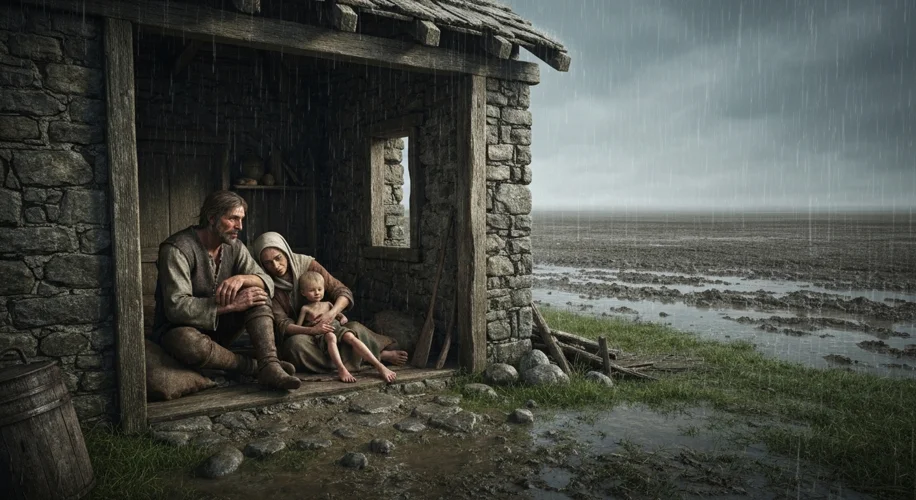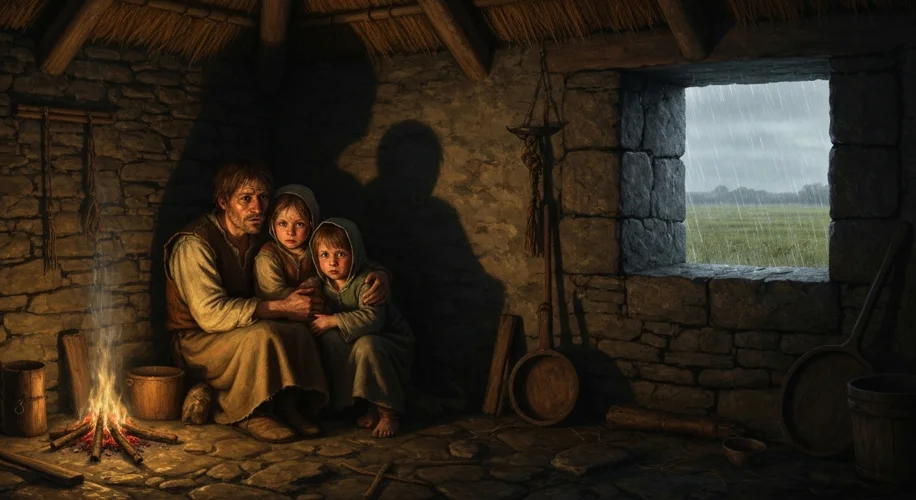The year is 1316. A relentless deluge has transformed the fields of England into a sodden quagmire, drowning hope along with the seeds of wheat. For the peasant farmer, this isn’t just bad weather; it’s the harbinger of famine, a grim specter that haunted medieval Europe with terrifying regularity. While kings and lords grappled with political machinations, the vast majority of the population, the peasantry, faced a starker reality: survival.
Life for a medieval peasant was intrinsically tied to the land and the unpredictable whims of nature. The vast majority were serfs, bound to the land and their lord, their lives a constant cycle of toil dictated by the seasons. Their diet was simple, often monotonous: bread, pottage (a thick stew of grains and vegetables), and ale. Meat was a luxury, and fresh produce was seasonal. This fragile existence made them acutely vulnerable to any disruption in the agricultural cycle.
Famine wasn’t an abstract concept; it was a visceral, physical experience. It began subtly: a meager harvest, a shorter winter store, the gnawing sensation of hunger in the belly. As the months wore on, the reserves dwindled. The once-familiar sight of healthy crops turned into withered stalks or drowned fields. Eyewitness accounts from the Great Famine of 1315-1317 paint a grim picture: emaciated bodies, widespread disease, and a chilling breakdown of social order, with instances of cannibalism even reported in the direst circumstances.

When the spectre of famine loomed, medieval peasants were not passive victims. They possessed a formidable arsenal of practical, often ingenious, survival strategies honed over generations. One of the most immediate responses was the diversification of food sources. While wheat and barley were the staples, any edible plant or animal was fair game. Foragers scoured the woods for nuts, berries, roots, and edible fungi. Wildfowl, rabbits, and even insects might find their way into the pot, supplementing meager grain supplies. The poor, in particular, relied heavily on foraging, a skill that became paramount during lean years.
Another crucial strategy was the preservation of food. Techniques like salting, smoking, and drying allowed peasants to store food for longer periods. While fresh meat was rare, salted pork or beef could sustain a family through winter. Drying fruits and vegetables also ensured a supply of essential vitamins. However, these methods were often reliant on having a surplus to begin with, a luxury few could afford during a widespread famine.
Resourcefulness extended to their immediate environment. Peasants would meticulously glean every last grain from the fields after the main harvest, a practice that often brought them into conflict with the lord’s reapers. They might also turn to fishing or hunting, if permitted by their lord, to augment their diet. In coastal areas, shellfish beds could provide a vital source of protein. However, the availability of these resources was often limited and could be quickly depleted.
Perhaps the most desperate, yet sometimes effective, strategy was migration. Families or even entire villages might abandon their homes in search of more fertile lands or areas less affected by the famine. These migrations were perilous, often undertaken with few possessions and facing the same dangers on the road as they did in their abandoned homes. Yet, for some, it offered a slim chance of survival.
Beyond food, social networks and community support played a vital role. Neighbors would share what little they had, a testament to the bonds of community forged through shared hardship. Religious institutions, particularly monasteries, often provided alms to the poor, though their resources could be overwhelmed during severe famines.
The effectiveness of these strategies varied greatly. A minor harvest failure might be weathered through careful management and the use of supplementary food sources. However, in years of widespread crop failure, like the Great Famine, even the most diligent peasants faced insurmountable odds. The lack of stored reserves, the inability to forage or hunt effectively in severely depleted landscapes, and the sheer scale of the disaster meant that many strategies, while practical, were ultimately insufficient.
The impact of famine was profound. It not only led to devastating loss of life but also weakened populations, making them more susceptible to disease. Famine years often saw significant social upheaval, with increased crime and unrest. For the peasantry, it was a constant reminder of their precarious existence and the ever-present threat of starvation. These periods of scarcity also had long-term demographic and economic consequences, shaping the patterns of settlement and agricultural practices for generations to come.
Ultimately, the practical strategies of medieval European peasants during famine were a testament to their resilience and adaptability. They were not simply passive sufferers but active agents in their own survival, employing a range of skills and knowledge to combat the ever-present threat of hunger. While these strategies could mitigate the worst effects of minor shortages, they often proved insufficient against the catastrophic impact of widespread crop failure, highlighting the deep vulnerability of medieval society to the vagaries of climate and the unforgiving realities of agricultural life.

